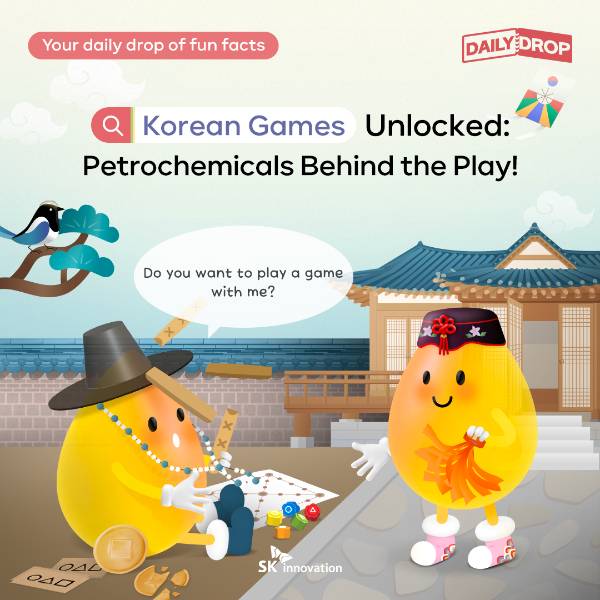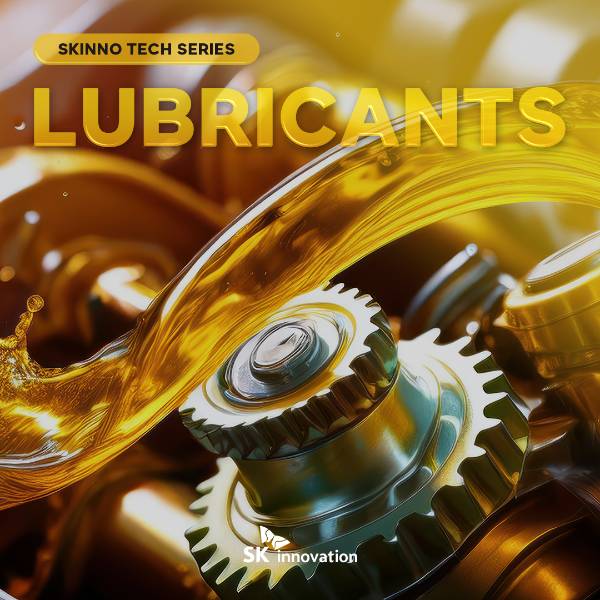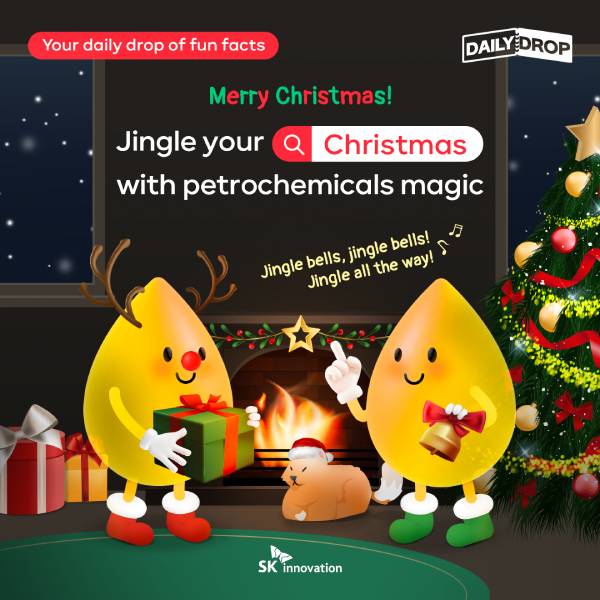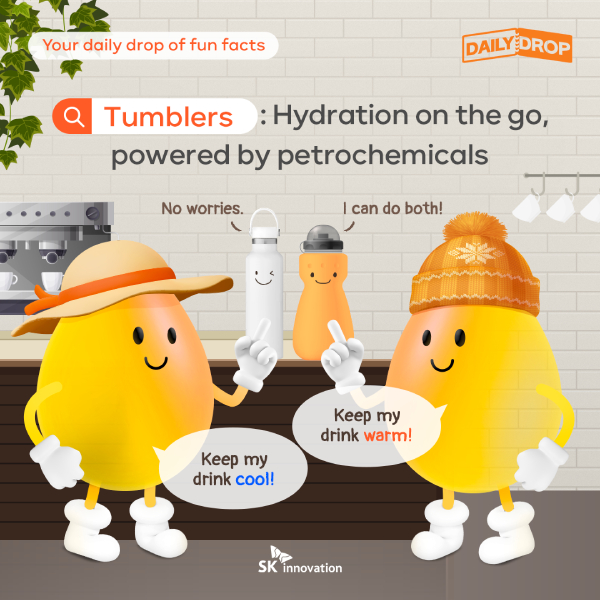 Trends & Reports
Trends & Reports
You may have heard and read many times the term “Black Gold” when people refer to crude oil or petroleum. The “gold” part, obviously, hints the economic value of it, but what about the “black”? If you try searching for the answer, the internet results will promptly show results explaining that “when crude oil is extracted from the ground, it has black color.” Fair enough. But if you just stop here and drawing the simple conclusion that crude oil is black, you should dig a bit deeper. Why so?
“Roses are red, violets are blue.”
But you know that, it’s not always true!
Just like how roses have many colors, and violet flowers also have multiple shades, the Black Gold is not always black. Keep scrolling down to learn more about the colors it has and the reasons behind such variation.
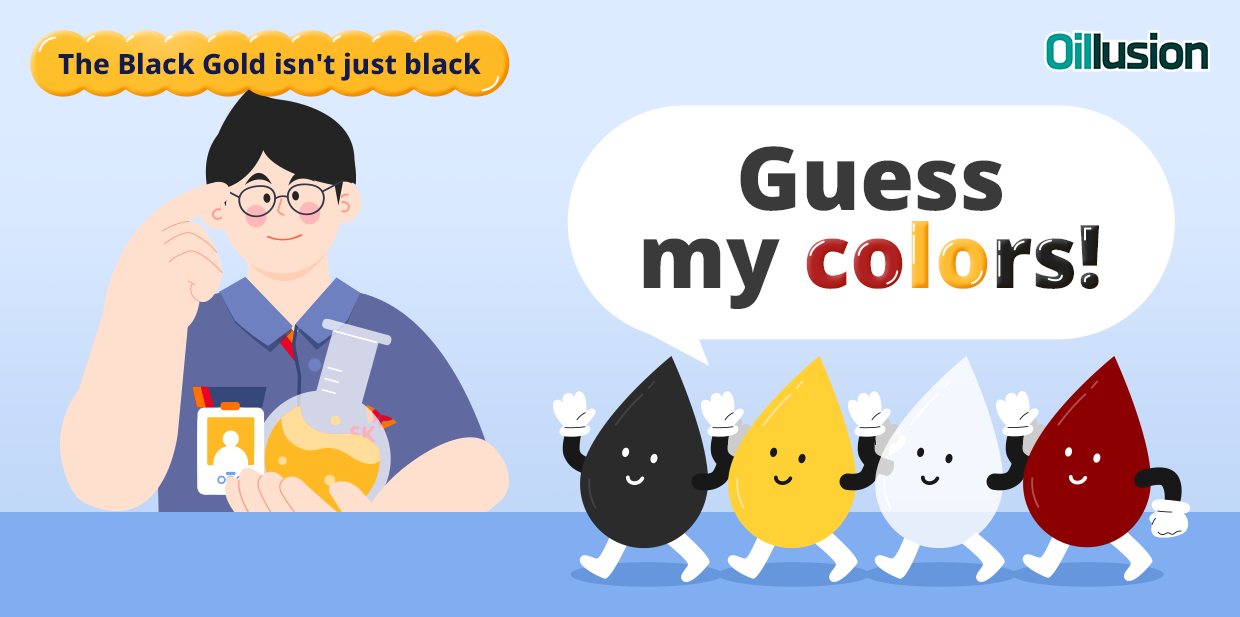
Let’s spend a minute to have a movie talk first. If you are a cinema fan, you must have heard of “Giant,” a classic movie released in 1956, directed by George Stevens and starring James Dean, Elizabeth Taylor, and Rock Hudson. The movie won the Best Director award at the 29th Academy Awards, and became a classic among classics that has won the hearts of many people over the last half-century. The movie has an iconic scene when young Jett (played by James Dean), who adores Leslie (played by Elizabeth Taylor), gets drenched in black liquid – the crude oil spewing from a drilling rig and rushes to Leslie in his oil-soaked appearance, exclaiming that he has struck oil, and now become “a rich boy.” Those who watched that scene are mostly left with the strong impression of the “black liquid,” and thus came up with the color black first of all when mentioning “crude oi.”
However, black is not the only color of oil. Had the location Jett drilled been not in Texas, the U.S., but in a region across the continent with different geological characteristics, Director George Stevens might have had to consider another color. Black inherently has its own lightness, and it can also possess saturation when blended with other colors, such as “dark red” or “dark blue.” In conclusion, while oil is generally black, a closer look reveals not only its differences but also that it can include hues of yellow or red. It’s not just about color. Some oils flow like sesame oil, while other oils are sticky like honey, indicating that their viscosities vary as well.
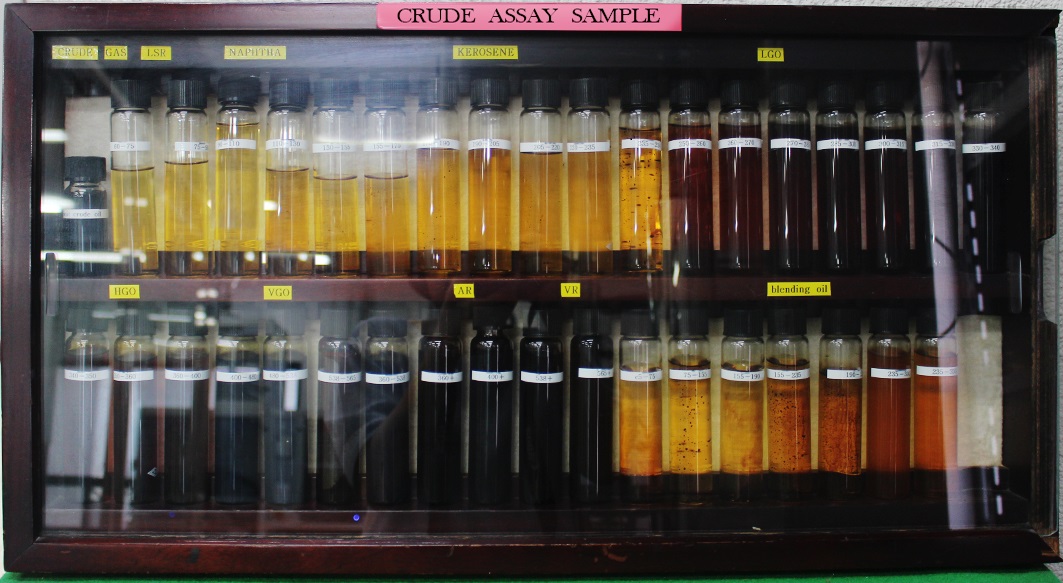
Crude Assay is a compilation of data on the yield and characteristics of crude oil and products obtained through the distillation of crude oil, featuring various colors and viscosities.
The petroleum products we commonly use, such as gasoline and diesel, are created through a process of appropriately mixing, boiling, and refining these oils with different colors and viscosities. The color of petroleum products is distinctly differentiated by product.

SK Innovation owns one of the largest crude oil refining facilities in the world – Ulsan Complex (Ulsan CLX), located in Ulsan, South Korean. In Ulsan CLX, there is Crude Oil Analysis Lab that analyzes and classifies around 300 types of oil and approximately 900 varieties of crude oil imported from all over the world. The quality of various crude oils, including their color and viscosity, is analyzed here, and research is conducted repeatedly to determine the best mixing methods. The experts performing this task are known as “Crude Oil Sommeliers.” The Crude Oil Sommeliers are experts with profound understanding in every aspect of crude oil. After examining the characteristics of various crude oils, they can find the perfect formula to refine them, playing a significant role in making the last products according to customers’ demands, just like how a sommelier discerns numerous wines and recommends the best match for a customer’s taste. Another similarity between crude oil and wine is that crude oil also can be blended.

“The misconception that all oil is black arose from crude oil extracted from the ground. Freshly extracted crude oil is a sticky liquid with high viscosity, and is often seen in dark shades of dark brown or dark green. This extracted crude oil, through refining processes such as fractional distillation, can become colorless and transparent or take on yellow or green hues.”
![]()
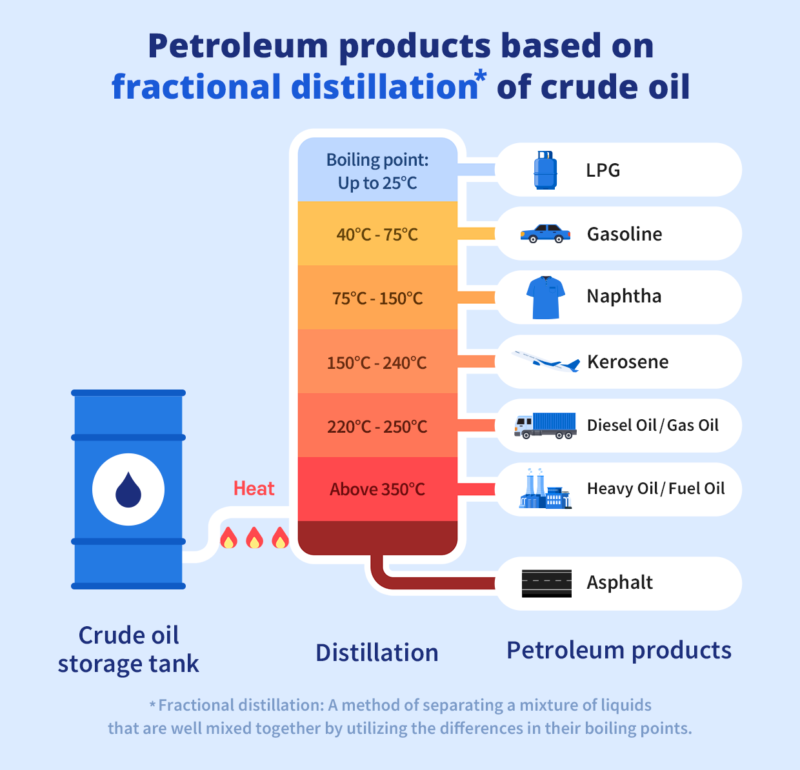
Refining these blended varieties of crude oil results in the extraction of various petroleum products. For example, Naphtha, which is used as a raw material for textiles, plastics, and other products, is a clear and transparent liquid. Gasoline has a golden yellow hue. Meanwhile, asphalt, which remains at the end of the crude oil refining process, is black.
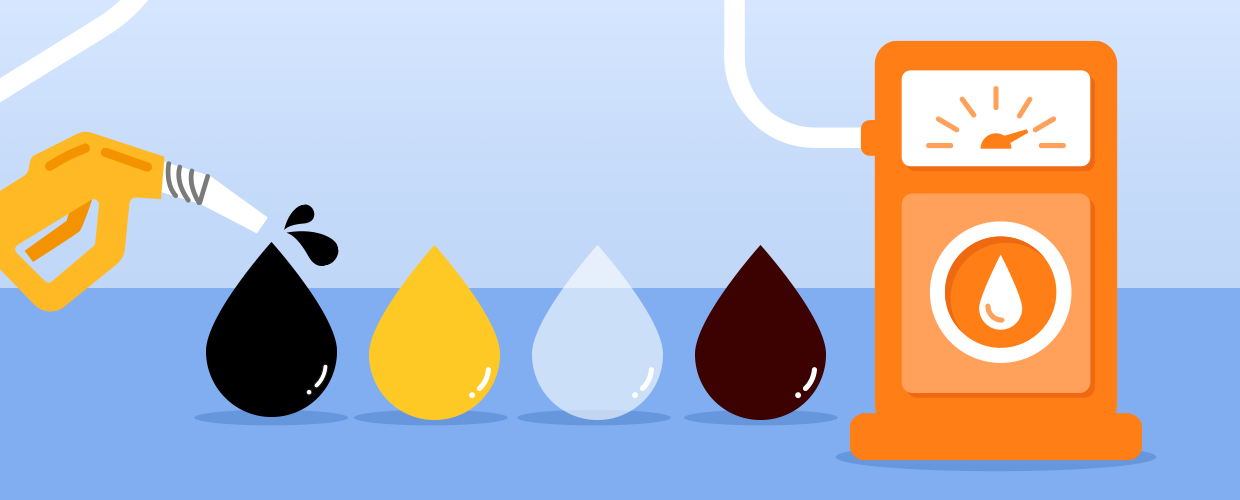
In fact, gasoline, kerosene, and diesel, excluding asphalt, are transparent and colorless liquids immediately after refining. However, gasoline is a very light yellow, while diesel is a darker yellow, and premium gasoline tends to have a relatively blue tint. The variations in colors for each product are derived from the fact that manufacturers add coloring to differentiate between types of oil to prevent misfuelling accidents*.
(*) Misfuelling accidents: Putting the wrong type of fuel in a vehicle is known as “misfuelling.” The most common type of misfuelling accidents is when diesel is mistakenly filled in a gasoline vehicle. Filling the wrong type of oil can lead to reduced performance, engine shutdown, and other abnormal symptoms, potentially leading to serious accidents.
The principle of extracting petroleum products from crude oil is simple. It involves collecting steam that has been vaporized according to their boiling points and condensing them back into a liquid. However, Crude Oil Sommeliers agree that the below question is not simple as they must consider the different characteristics of each crude oil:


“Refining crude oil requires intricate and complex processes. The crude oil produced in various parts of the world differs in color and viscosity depending on the country and the production field, and the proportion of components and types of impurities in the crude oil vary as well. Therefore, if all crude oil were processed in the same way, it would be impossible to produce petroleum of stable quality. To refine the diverse crude oil into a uniform quality, it is necessary to carefully adjust conditions such as temperature and pressure during the refining process according to the characteristics of each crude oil.”
![]()
Even crude oil extracted from the same production site shows differences in characteristics. Crude oil contains not only carbon and hydrogen but also other elements, as well as impurities such as sulfur compounds, nitrogen compounds, oxygen compounds, and metal salts. As removing impurities is one of the key factors determining the quality of petroleum products, it is vital to analyze the components of crude oil and go through the process based on its results. At the forefront of these complex tasks stands the Crude Oil Sommeliers.
The most critical facility for the Crude Oil Sommelier’s crude oil analysis work is the Pilot Plant inside the Crude Oil Analysis Lab. Made of special glass, the Pilot Plant is a scaled-down version of Ulsan CLX’s refining facility, the CDU (Crude Distillation Unit, Atmospheric Distillation Tower), where various types of crude oil are tested under actual refining processes to obtain analysis results.

Pilot Plant, a core facility of Crude Oil Analysis Lab at SK Innovation Ulsan Complex

“The important data obtained through pilot plant analysis is called Crude Assay. The Crude Assay is a compilation of data on the yield and characteristics of products obtained from crude oil and its distillation. This data is used to adjust the blend ratio of crude oil and set the operating conditions of the plant, serving as a guide for the production of the final petroleum products.”
![]()

The Crude Assay of Crude Oil Analysis Lab at the SK Innovation Ulsan Complex
Had the setting of the movie “Giant” been in Australia, James Dean’s clothes and face drenched in oil might have been much lighter in color, and if it had been set in some region of the Middle East, there might have been a more pronounced red hue. Of course, regardless of the color used, the movie would likely have been remembered as a masterpiece. The thing is you should remember that crude oil has more colors than just one shade of black.











 Youtube
Youtube Facebook
Facebook Instagram
Instagram Linkedin
Linkedin









